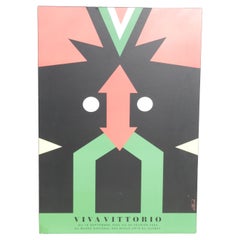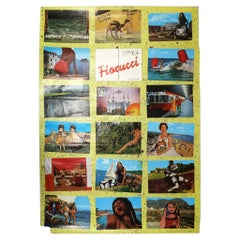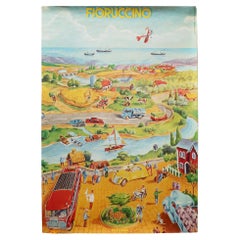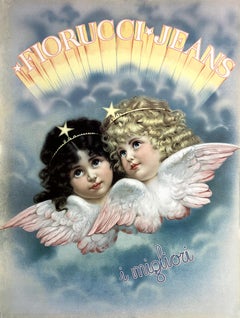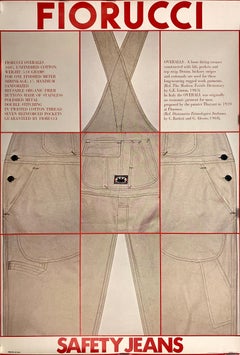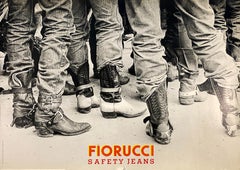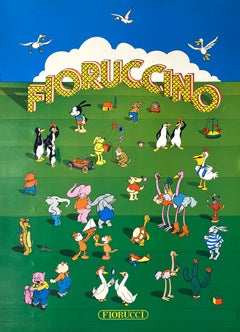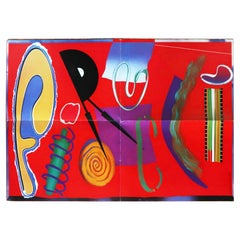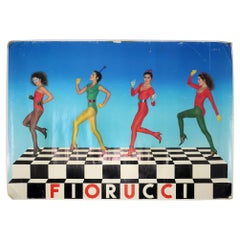Fiorucci Poster
21st Century and Contemporary Posters
Paper
Late 20th Century Post-Modern Posters
Paper
Late 20th Century Post-Modern Posters
Paper
1970s Prints and Multiples
Lithograph
1970s Prints and Multiples
Lithograph
1970s Prints and Multiples
Lithograph
1970s Prints and Multiples
Lithograph
1970s Prints and Multiples
Lithograph
Recent Sales
Late 20th Century Post-Modern Posters
Paper
Late 20th Century Post-Modern Posters
Paper
Late 20th Century Post-Modern Posters
Paper
Late 20th Century Post-Modern Posters
Paper
Late 20th Century Post-Modern Posters
Paper
Late 20th Century Post-Modern Posters
Paper
Late 20th Century Post-Modern Posters
Paper
Late 20th Century Post-Modern Posters
Paper
Late 20th Century Post-Modern Posters
Paper
Late 20th Century Post-Modern Posters
Paper
Late 20th Century Canadian Post-Modern Posters
Late 20th Century Post-Modern Posters
Paper
Mid-20th Century Italian Mid-Century Modern Posters
Metal
People Also Browsed
Vintage 1960s Dutch Mid-Century Modern Wall Lights and Sconces
Glass
20th Century Danish Victorian Books
Gold Leaf
Vintage 1950s Dutch Mid-Century Modern Daybeds
Steel
21st Century and Contemporary Modern Planters, Cachepots and Jardinières
Cement
21st Century and Contemporary American Modern Pillows and Throws
Linen
2010s Australian Scandinavian Modern Ottomans and Poufs
Sheepskin
1930s Modern Color Photography
Archival Pigment
Antique Late 19th Century Chinese Qing Furniture
Elm
Mid-20th Century American Mid-Century Modern Swivel Chairs
Velvet
Vintage 1970s Dutch Chinoiserie Table Lamps
Brass
Antique 18th Century French Planters and Jardinieres
Clay
Vintage 1970s Italian Space Age Sectional Sofas
Linen, Velvet, Foam
Vintage 1950s American Modern Lounge Chairs
Aluminum
20th Century Polish Posters
Paper
20th Century American Mid-Century Modern Lounge Chairs
Leather
Vintage 1950s French Country Ceramics
Ceramic, Faience
Read More
Punk Rock and Rebellion Animate London’s Hit Yoshitomo Nara Show
The exhibition includes his portraits of wide-eyed kids with mayhem on their minds, as well as some of the artist’s personal belongings.
Whether Painted or Papered, Muraled Walls Make Bold Statements in the Home
The ancient practice of covering walls in artistic scenery is back.
In Francks Deceus’s ‘Mumbo Jumbo #5,’ the Black Experience Is . . . Complicated
Despite the obstacles, the piece’s protagonist navigates the chaos without losing his humanity.
12 Floral-Accented Rooms with a Handmade, Folkloric Feel
Who needs a flower garden? Just use your imagination — and some beautifully patterned wallpaper or fabric — to bring the outdoors in.
This Wolf Kahn Pastel Is the Epitome of Beauty at Its Most Essential
A longtime admirer of Kahn’s work, 1stDibs editorial director Anthony Barzilay Freund explores why it’s relevant now more than ever.
Why Jules Chéret Was the King of the Modern Poster
The streets of fin-de-siècle Paris were set aglow with colorful poster ads, thanks to the printing techniques invented by Jules Chéret. Now, the Milwaukee Art Museum is celebrating this undersung talent in America's first solo show dedicated his exuberant works.
Anna Condo’s Multifaceted Career Spans Film, Photography and NFTs
From her historic Manhattan townhouse, the talented creator and curator of 1stDibs' latest NFT exhibition tells us about the art in her home and how she got involved with cryptoart.
How Keith Rivers Went from NFL Linebacker to Blue-Chip Art Aficionado
The former football player is as serious about becoming a great contemporary-art patron as he once was about making tackles. Here, Rivers tells us how he got the collecting bug and how his tastes have evolved over the years.
